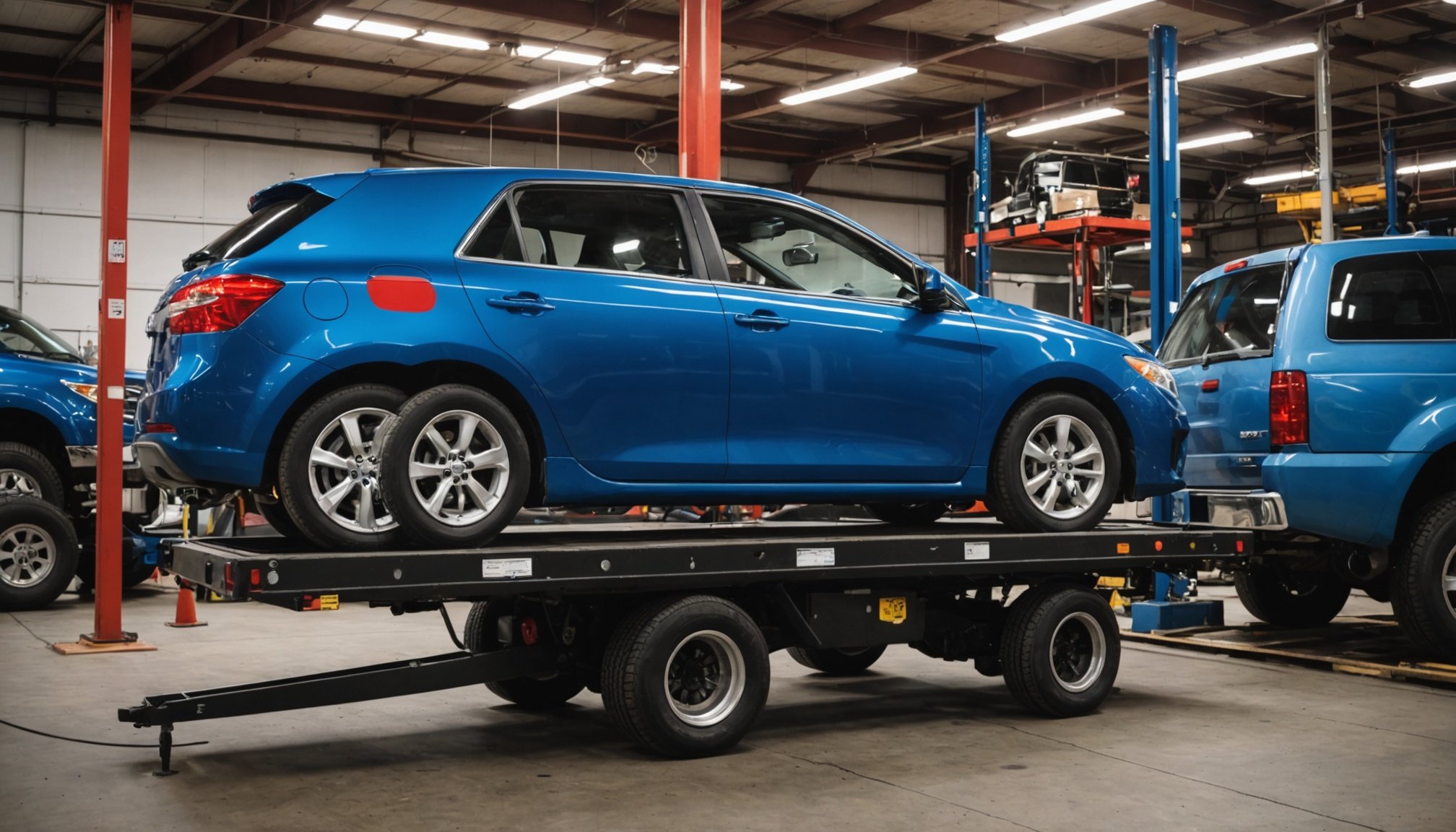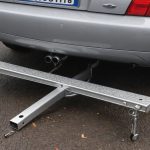Understanding the Safety Hazards of Lowering Your Vehicle: Essential Insights You Must Consider
When it comes to modifying your vehicle, one of the most popular and visually appealing changes is lowering it. However, this alteration can have significant implications for your vehicle’s safety, performance, and overall driving experience. Here’s a comprehensive look at the safety hazards associated with lowering your vehicle and what you must consider before making this modification.
The Appeal and Risks of Lowering Your Vehicle
Lowering your vehicle can enhance its aesthetic appeal and potentially improve its handling by reducing the center of gravity. However, this comes with a set of risks that drivers often overlook in their enthusiasm for a sleeker look.
Also read : Crucial safety practices for safely managing and discarding hybrid vehicle batteries
Impact on Ground Clearance
One of the most immediate effects of lowering your vehicle is the reduction in ground clearance. This can make your vehicle more susceptible to damage from road hazards such as potholes, curbs, and debris. As noted in tire blowout statistics, road hazards like potholes and curbs are common causes of sudden tire damage and blowouts[1].
Suspension and Alignment Issues
Lowering your vehicle can also affect its suspension and alignment. If not done correctly, it can lead to uneven tire wear, reduced handling, and increased risk of accidents. For instance, if the suspension is compromised, it can make the vehicle more difficult to control, especially at high speeds or during sudden maneuvers.
Safety Implications on the Road
The safety implications of lowering your vehicle are multifaceted and can impact various aspects of driving.
Reduced Visibility and Increased Blind Spots
Lowering your vehicle can alter the driver’s perspective, potentially increasing blind spots. This is particularly problematic when changing lanes or merging with traffic. Defensive driving techniques, such as frequently checking mirrors and blind spots, become even more crucial to avoid collisions[3].
Increased Risk of Tire Blowouts
Tires on a lowered vehicle are under additional stress due to the altered suspension and reduced ground clearance. This increases the risk of tire blowouts, especially if the vehicle is driven at high speeds or over rough road surfaces. According to the NHTSA, vehicles with pre-crash tire problems are more prone to accidents, and underinflated tires are three times more likely to be a critical factor in such incidents[1].
Compromised Braking Performance
The suspension and alignment changes can also affect the braking performance of your vehicle. This is because the lowered stance can alter the weight distribution and the way the vehicle responds to braking. Harsh braking, a common issue in aggressive driving, can be particularly dangerous in a lowered vehicle, as it may lead to loss of control or skidding[2].
Practical Considerations and Mitigation Strategies
While lowering your vehicle can introduce several safety hazards, there are steps you can take to mitigate these risks.
Regular Maintenance and Inspection
Regular maintenance is crucial to ensure your vehicle remains safe on the road. This includes checking tire pressure, tread depth, and signs of wear more frequently than usual. Here are some key maintenance tasks to focus on:
- Tire Pressure: Ensure your tires are properly inflated to the recommended pressure. Underinflated tires are more likely to fail, especially in a lowered vehicle[1].
- Suspension and Alignment: Regularly check the suspension and alignment to ensure they are within the manufacturer’s specifications.
- Brake Pads: Monitor brake pad wear more closely, as the altered weight distribution can accelerate wear.
Defensive Driving Techniques
Defensive driving is essential for any driver, but it becomes even more critical when driving a lowered vehicle. Here are some defensive driving tips to help you stay safe:
- Maintain a Safe Following Distance: Keep a safe distance from the vehicle in front of you to allow more time to react to unexpected situations. The “three-second rule” is a good guideline to follow[3].
- Be Aware of Your Surroundings: Stay alert and watch for signs that another driver might make a sudden move. Check your mirrors frequently and be mindful of blind spots.
- Avoid Distractions: Distracted driving is a leading cause of accidents. Avoid using your phone or adjusting settings while driving, and pull over to a safe location if you need to do so[3].
Use of Safety Features
Modern vehicles come with various safety features that can help mitigate the risks associated with a lowered vehicle. Here are a few features to look out for:
- Tire Pressure Monitoring System (TPMS): Ensure your vehicle is equipped with a TPMS, which can alert you to underinflated tires. However, it’s also important to regularly check tire pressure manually, as some drivers may ignore dashboard warnings[1].
- Electronic Stability Control (ESC): ESC can help stabilize the vehicle during sudden maneuvers, which is particularly beneficial in a lowered vehicle.
Economic and Legal Considerations
Lowering your vehicle can also have economic and legal implications that you must consider.
Insurance and Maintenance Costs
Lowering your vehicle can increase your insurance premiums due to the higher risk of accidents and damage. Additionally, the need for more frequent maintenance and potential repairs can add to your overall costs.
Legal Compliance
Ensure that any modifications to your vehicle comply with local and national regulations. Non-compliance can result in fines, penalties, or even the vehicle being deemed unsafe for road use.
Lowering your vehicle can be an appealing modification, but it is crucial to understand the associated safety hazards. By being aware of these risks and taking proactive steps to mitigate them, you can ensure a safer driving experience.
Here is a summary of the key points to consider:
- Regular Maintenance: Regularly check tire pressure, suspension, and alignment.
- Defensive Driving: Maintain a safe following distance, be aware of your surroundings, and avoid distractions.
- Use of Safety Features: Ensure your vehicle is equipped with safety features like TPMS and ESC.
- Economic and Legal Considerations: Be aware of the potential increase in insurance premiums and ensure compliance with local and national regulations.
By following these guidelines, you can enjoy the aesthetic benefits of a lowered vehicle while minimizing the risks to your safety and the safety of other road users.
Table: Comparison of Safety Risks Before and After Lowering Your Vehicle
| Safety Aspect | Before Lowering | After Lowering |
|---|---|---|
| Ground Clearance | Higher ground clearance reduces risk of damage from road hazards. | Lower ground clearance increases risk of damage from road hazards. |
| Suspension and Alignment | Standard suspension and alignment settings. | Potential for uneven tire wear and reduced handling. |
| Tire Blowout Risk | Lower risk of tire blowouts due to standard tire pressure and wear. | Higher risk of tire blowouts due to increased stress on tires. |
| Braking Performance | Standard braking performance. | Potential for compromised braking performance due to altered weight distribution. |
| Visibility and Blind Spots | Standard visibility and blind spots. | Potential for increased blind spots and reduced visibility. |
| Defensive Driving Need | Defensive driving is beneficial but less critical. | Defensive driving is more critical due to increased safety risks. |
Quotes and Insights from Experts
- “Tire blowout accidents are more common and more dangerous than you might think. When a tire suddenly loses pressure, you lose control of your car, and this is a potential cause of a rollover, collision, or other serious incident that can lead to severe injuries.”[1]
- “Defensive driving involves adopting a mindset focused on anticipating potential hazards and staying alert to changing conditions on the road. Whether facing an unexpected lane change, a distracted driver, or a sudden stop, defensive drivers are prepared to respond quickly and prevent accidents.”[3]
- “Harsh driving can have a significant impact on fleets, both for an employee’s safety and the bottom line. Overspeeding, harsh cornering, and braking are equally concerning forms of aggressive driving that highlight the importance of maintaining control and anticipating road conditions.”[2]
By understanding these risks and taking the necessary precautions, you can ensure that your decision to lower your vehicle does not compromise your safety or the safety of others on the road. Remember, safety should always be your top priority when making any modifications to your vehicle.






